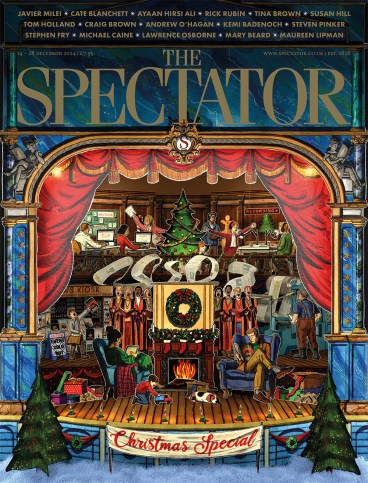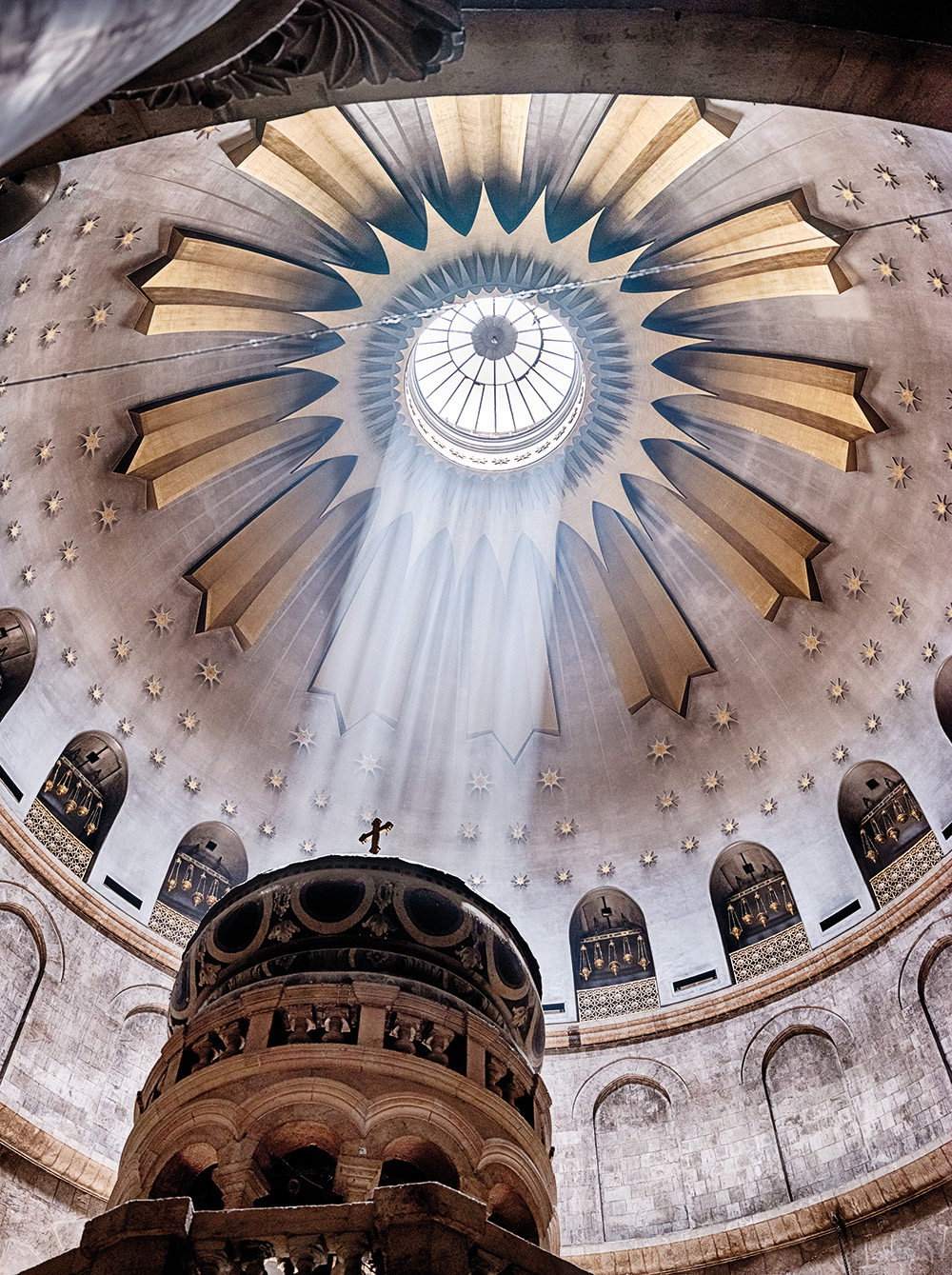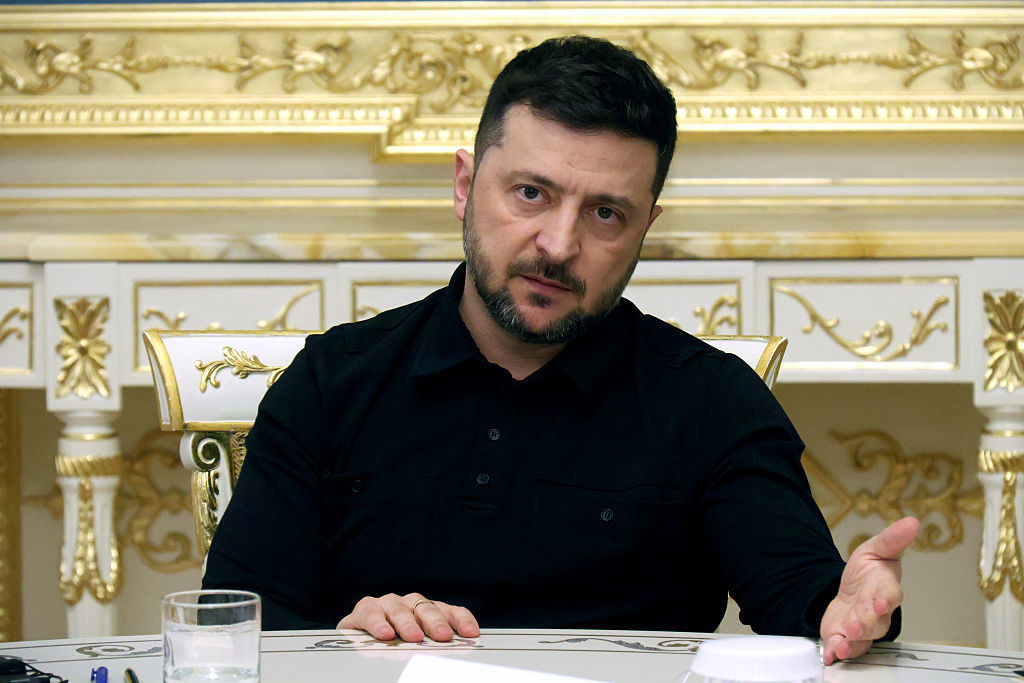
For a press tour of the Church of the Holy Sepulchre in Jerusalem – the Church of the Resurrection, the Mother of churches, site of the last four stations of the Cross – you must apply to the Patriarch. This being Jerusalem, there are three: the Latin, the Armenian and the Greek Orthodox. The process of accreditation is like a scene from an Olivia Manning novel. If you receive an acknowledgment of your email from the Greek Patriarchate – the Latin and the Armenian were otherwise engaged – you turn into Greek Patriarchate Street and present yourself at the Patriarchate palace. It is pale limestone, silent, a home to spoilt cats.
The Church is, without exception, the most arresting building in the world
You are waved towards an office, get lost, and consult a priest for directions. You climb stairs and knock on doors. Once in the office – a bright room where secretaries type letters – you wait for a pre-interview with a bishop, to whom you present your credentials. If you pass this test – I tell him Spectator readers are godly people – you are invited to meet Theophilos III, the 141st primate of the Orthodox Church of Jerusalem. If you are me, you will bow to him – it was the obvious thing to do – and he will nominate a guide to the Church of the Holy Sepulchre, which I think is, without exception, the most arresting building in the world.
St Peter’s in Rome is one-dimensional, less a church than a painting that shouts, and I am afraid of it. The Pantheon is empty, waiting for something that won’t come back. St Paul’s Cathedral is a compromise. The Frari is a barn with a Titian. The Holy Sepulchre – and I do not think Theophilos would like this description – contains terrible art and it is filled with magic. It doesn’t need great art to summon the ineffable. It has cut out the middleman.
My guide is a large, kindly priest, and he takes me round a building site that reminds me slightly of The Omen. They are mending the floors. This involves negotiations between the Greek, Latin and Armenian patriarchs, the main stakeholders – though the Coptics, Syriacs and Ethiopians have an interest too. The parvis – the courtyard – is filled with sacks of rubble and cut stone. The transepts and the ambulatory have dust sheets and temporary floors: I glimpse the Greek Choir and see pieces of wood piled against walls. For me, this is better than any polished museum church. It is alive, and they tend it.
Superficially it is an 11th-century Crusader church built on the foundations of a 4th-century basilica. But it is a palimpsest that makes no sense and does not want to. In its bones it is a Jewish graveyard, in which Christ was crucified, buried, and resurrected. It is Golgotha in Aramaic, Kranion in Greek, and Calvary in Latin. The Romans, fearful of its power, covered it with a temple to Venus, of all gods. What luck! When Queen Helena, mother of the Christian Emperor Constantine, arrived in the 4th century, it was preserved under Roman marble.
Constantine built his great basilica here, the Martyrion, which was destroyed by the Persians, rebuilt and destroyed again by the Egyptians; a smaller church was built in the 11th century, and then the Crusaders came. It survived a fire in 1808, and an earthquake in 1927. It has known the Persians, the Ottomans, the British, the Jordanians and the Israelis and constists of 22 chapels, sacristies and monasteries; offices; mosaics; pools.
There is no signage beyond a name over a door in the souk: Holy Sepulchre. There is no fee, no reception desk, and no information. You know you are at the tomb of Christ – the sepulchre itself, which the BBC idiotically called ‘a pale pink kiosk’ in 2008 – because you join a queue under a rotunda called Anastasis (‘Resurrection’) and women are crying on their knees. By all means hold your guidebook; you will not divine this place. You can only feel, and my notes are scribbles. We climb the steps to the Chapel of Golgotha: marble built on to rock with blazing iconography, and too many lamps. The Greeks don’t do understatement; this is, among other things, a clash of tastes. There are two altars: one Latin, one Greek, a manifestation of the Great Schism of 1054 when the Catholic and the Eastern Orthodox church spilt. If you place your hand through a silver disc under the Greek altar, you can touch the rock of Golgotha. Pilgrims stand, sit, weep, and take photographs on their iPhones as priests tut at them.
The parts that obsess me are the strangest, and most ancient: the chapel of the Jacobite Syrians, a derelict room in Constantine’s walls with a single altar and mirror. It is the gateway to a 1st-century Jewish burial chamber, and you can’t say that about St George’s, Windsor. On the roof I find the Coptic Church of Queen Saint Helena. It is tiny, and superficially mild, but walk downstairs and find a pool of water in a cave as frightening as the entire Vatican. I still owe the Copts 12 shekels for the entry fee. I won’t forget.
‘Priests brawl at Holy Sepulchre’ is a newspaper stalwart. Raymond Cohen’s Saving the Holy Sepulchre: How Rival Christians Came Together to Rescue Their Holiest Shrine – a slightly more objective book than the Franciscan guide to the Holy Land I bought in the souk, which insinuates that the church is vulgar thanks to the Greeks – has accounts of every fight. The church is governed by a convention called the Status Quo, established in 1757. They need it because they cannot even agree on a calendar. The Greeks use the Julian, and the Latins the Gregorian. Most years there are two Easters: when there aren’t it’s worse.

Christians have long memories. When the Crusaders came in 1099, they expelled the Orthodox Patriarch – he fled to Constantinople – and installed the Latin Patriarch, who fled in turn with the Crusaders in 1187. They are still fighting it out, and I understand that. There is a similar fight between Muslims and Jews on the Temple Mount, though with fewer architects.
It manifests in stasis. To mend something under the Status Quo is to own it, and the church spent much of the 20th century in emergency scaffolding: apparently, it looked like a hedgehog. In 2002, 11 monks were injured over the moving of a chair into shade on the roof, which is contested by Ethiopians and Copts. In 2008, there was a brawl between Armenians and Greeks on Palm Sunday. The keyholders have been Muslim since 1187: they have to be.
The negotiations are epics, taking decades. Cohen has the stories: letters between Rome, Jerusalem and London while the church wobbled, but never fell. Thank God for Constantine’s builders: the foundations are sound. I read about the negotiations and think: these are the inactions of men who have never done their own laundry. On the whole, the Greeks have won. They have the immense Greek Choir, which my Franciscan guidebook disapproves of, though my priest guide tells me it is the centre of the world. The Latin chapels are restrained, as if to say: we’re not that bothered, we’ve got the last Raphael. The zenith of the Latin fightback was during the war when, had Mussolini won, there were plans to demolish the Church of the Holy Sepulchre and part of the Christian quarter and replace it with a Fascist super-cathedral. When I saw the drawings, I screamed. It was Monty who saved it, by winning the Second Battle of El Alamein and when I passed his statue on Whitehall the other day I blew him a kiss.









Comments